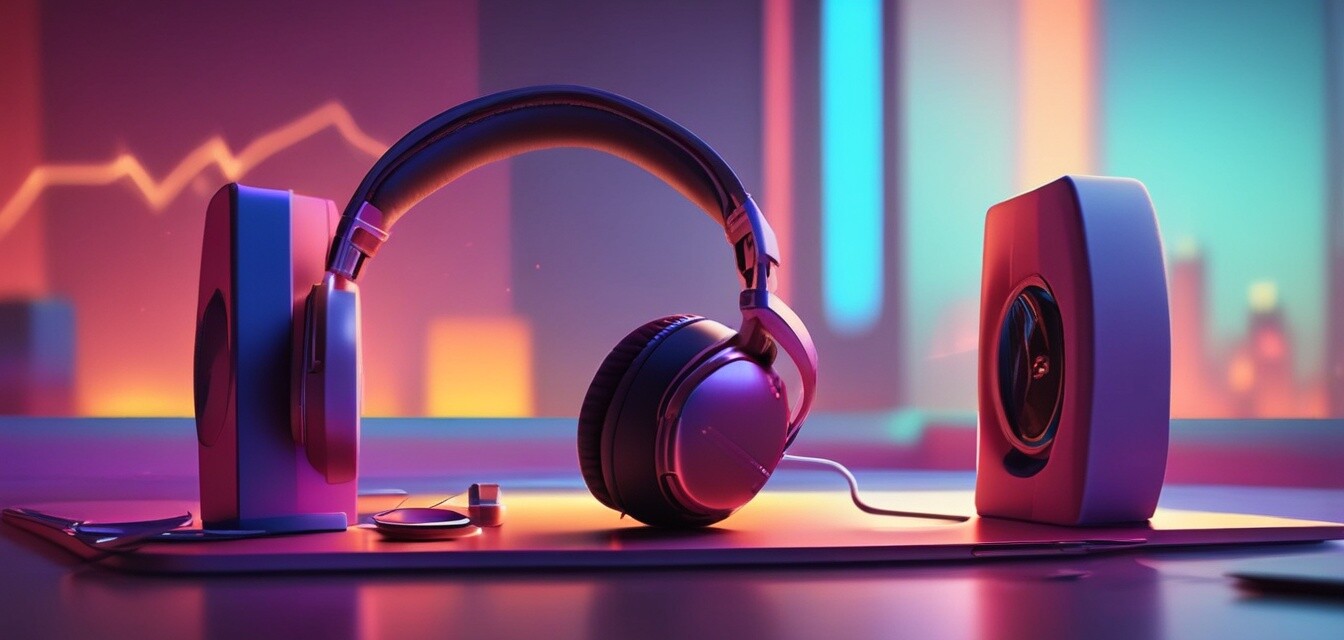
Audio Trends: What's Hot in 2025
Key Takeaways
- Emerging audio technologies are focused on enhanced user experience and convenience.
- Wireless audio solutions are becoming the norm with increased capabilities.
- Smart audio devices will integrate more seamlessly into smart home systems.
- Personalization and customization in audio products are on the rise.
- Sustainability is a key factor influencing product development in the audio sector.
The audio landscape is rapidly evolving, and 2025 is expected to bring some exciting advancements in technology and user experience. As consumers seek more from their audio devices, manufacturers are pushing the boundaries of what's possible. From smart speakers that blend seamlessly into our lives to headphones that adapt to our personal preferences, the future of audio is all about innovation and connectivity. Join us as we explore the most anticipated audio trends for 2025.
1. The Rise of Wireless Audio
Wireless audio technology has come a long way, and by 2025, it will dominate the market. With advancements in Bluetooth and Wi-Fi audio transmission, expect to see:
| Feature | Description |
|---|---|
| Lossless audio quality | High-resolution audio streaming will become more accessible to consumers, providing an unparalleled listening experience. |
| Extended range | Greater coverage and fewer dropouts will allow users to enjoy music in more areas without interruption. |
| Multi-room streaming | Seamlessly connect multiple devices across different rooms for synchronized playback. |
2. Smart Audio Integration
As homes become smarter, so too will audio devices. By 2025, the trend toward smart audio integration will lead to:
- Increased interoperability with smart home devices, allowing users to control everything from lights to security systems using voice commands.
- Enhanced AI capabilities in smart speakers that can learn personal preferences and adjust audio settings automatically.
- Improved user interfaces that simplify interaction with various audio-visual systems.
Smart Speaker Market Growth
According to market research, the smart speaker market is projected to grow significantly in the coming years. This growth will fuel the demand for innovative audio solutions that cater to tech-savvy consumers.
Explore our buying guides for the best smart audio devices available today.3. Immersive Audio Experiences
In 2025, audio experiences will focus on immersion, with advancements in spatial audio technologies. Key trends include:
| Technology | Description |
|---|---|
| 3D Audio | Audio systems will recreate an immersive sound environment, making users feel as if they are at a live concert. |
| Augmented Reality (AR) Audio | AR technology will enable soundscapes that react to real-world environments, blending digital audio with the physical world. |
The Future of Gaming Audio
With the popularity of gaming continuously rising, the integration of immersive audio in gaming will enhance the overall experience. Gamers can expect:
- Soundscapes that respond dynamically to game actions, enhancing engagement.
- Headphones designed specifically for immersive gaming audio.
4. Personalization and Customization
2025 will also see a greater emphasis on personalization in audio products. Manufacturers will focus on:
- Customizable sound profiles that adapt to personal preferences using AI.
- Devices that allow users to customize their hardware, from ear tips to color choices.
5. Sustainability in Audio Gadgets
As environmental concerns rise, companies will prioritize sustainability in their audio product lines. Expect:
- Devices made from recycled materials and sustainable manufacturing processes.
- Products designed with longevity in mind, reducing electronic waste.
Pros
- Enhanced user experience with personalized audio settings.
- Simplified control over multiple devices.
- Improvisation of immersive audio experiences for entertainment.
Cons
- Potential privacy concerns with smart devices.
- Higher prices for advanced technologies.
Conclusion
As we approach 2025, the audio landscape is poised for remarkable transformation. With an increase in wireless technology, smart integrations, immersive experiences, and a commitment to sustainability, consumers can look forward to a future where audio is not just heard, but truly experienced. Keep an eye on these trends as they develop, and be prepared to embrace the new era of audio technology!
